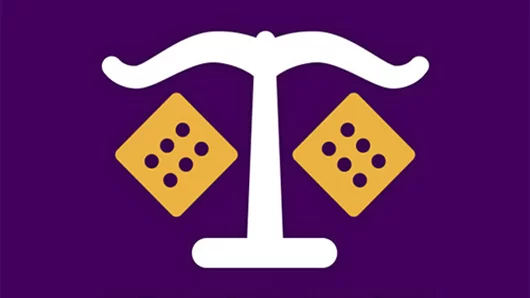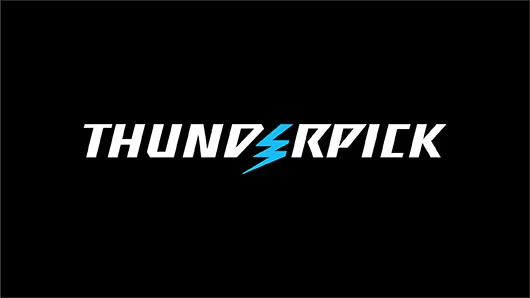Did you like the video? Follow our community and add your comments below…
As you know, for several months now at Marca we have been bringing you all the latest news on eSports, but several comments from some users indicated that, in addition to news about the competitive scene, they would also appreciate explanations of the games themselves.
Thus, throughout the following article we will explain what Counter-Strike: Global Offensive (CSGO), one of the most popular eSports, consists of, and through which we hope you will better understand all the nuances of this exciting shooter.
1. Basic Concepts
In competitive Counter-Strike matches we will always find 10 players divided into two different teams, five players for each team. Official matches are played over 30 rounds in total, with each round lasting a maximum of two minutes.
The game has two sides (terrorists and anti-terrorists) and each side is managed by a different team. Thus, one team aims to place a bomb in a certain place (the terrorists), while the other team must prevent this from happening (the anti-terrorists). Both teams can also win each round if they manage to eliminate all members of the opposing team.
Thus, of the 30 total rounds, 15 are played on one side and 15 on the other. That is, a team starts playing 15 rounds as a terrorist (for example) and then must play another 15 rounds as an anti-terrorist. Virtually the full 30 rounds are never played because when a team reaches 16 rounds, it has already won, and therefore both the score and the match are stopped at that point.
2. Media Concepts
Economics and money management
Although at first glance Counter-Strike may appear to be a game where players simply shoot at each other, there is much more to it than that. So much so that some people define CSGO as a team strategy game rather than a shooter. Others go so far as to define it as an economy game. Let's take a closer look at these two concepts.
Starting with the latter, the economy is undeniably an essential part of the game. Every time a player eliminates another player, every time a round is finished, every time the bomb is placed in its proper place and with a few other actions, each player receives money. This money is spent at the beginning of the rounds to buy weapons, from submachine guns or sniper rifles to helmets and bullet-proof waistcoats to different types of grenades. Money, in Counter-Strike as in real life, is a very scarce commodity, and therefore has to be managed correctly. It is necessary to buy the best possible weaponry in order to be able to stand up to the opposing team, but this is not always possible and this is where the complications begin.
The first thing to bear in mind is that all players start on equal economic terms (800 dollars each), however, from that moment on each player will have a different amount of money and this is cumulative, that is to say, the money you have in a round depends directly on the money you had in the previous round and above all on how it has been managed.
In addition to this we have the “eco” or economic rounds. These are rounds in which a team decides not to buy weapons in order to “save” costs during one round so that they have more money in the next round and can then buy the full set of weapons. In the final moments of some rounds, you can often see a player hiding and not moving even though the round is practically lost. This is because the team is effectively writing off the round as lost but is trying to keep the weapon for the next round, because if a player survives, he keeps all his weapons for the next round and therefore does not have to buy them back.
Types of grenades
Within the weaponry, and although they are the cheapest items to buy, grenades play a key role in every team. Terrorists need them to make it easier for them to get into the bomb sites. On all maps there are two zones for this, the A (or big bomb) and B (or small bomb) zones.
In this way we have mainly four different types of grenades. The first of these is the classic grenade, the grenade that if it explodes near another player it takes away a percentage of his total health, even eliminating him if the player was already damaged. Another very useful and widely used type of grenade is the flashbang, or blinding grenade. This produces a large explosion of light that immediately blinds any player who witnesses the explosion for several seconds. To these we have to add Molotov cocktails or incendiary grenades and finally smoke grenades. These last two types are mainly used to cover specific parts of each map and to buy time or take away the enemy's vision.
The handling, precision and combination of these four types of grenades is the basis for much of the team play and the strategies used by the professional teams to try to enter the bomb placement zones (A and B), whether it is the terrorists trying to activate them or the anti-terrorists trying to defuse them.
3. Advanced concepts
By advanced concepts we could understand everything that exists in the game, but is not visible to the naked eye, and the truth is that on this point we could write for several days, because as mentioned above, Counter-Strike is actually a very complete and complex e-sport. So we are going to talk about internal communication in the teams, the roles of each player, and finally a couple of “brushstrokes” about team play.
Internal communication
Communication is an important aspect in all sports, but in eSports it is an aspect that takes on special relevance and within these, perhaps in CSGO more than in other games. This is because even though each round is previously studied and analyzed, the opposing team will always try to stop and break those initial schemes, so the ability to react and reorganize is especially important in this game.
Thus, the five players in each round are in constant communication to better manage the information they obtain. The position of their enemies, where casualties have occurred or what weapons their opponents have are some of the phrases that are automatically spoken in each round. But internal team communication is much more than just information, it is also about psychology and motivation, both of which are very important in e-sports.
When a team is clearly losing and the end of a match is slowly approaching and the morale of the team is affected, it is very important that one of the players manages to change the attitude of his teammates. The psychological aspect often becomes the most important aspect in order to get the team out of the game.
Roles of each player
Not all the players in the team perform the same functions, in fact, each player has different roles and that is why the coordination between the five players is of special importance. We are not going to analyze each of these five roles in detail, as we have already published another article on this subject. Briefly summarized, the five roles to be differentiated are:
Leader in Game: This is probably the most important function. He is the brain of the team and in charge of directing his team's play, coordinating his teammates and organizing both the different attacks and the defenses in each zone A or B of the maps.
Entry fragger or spearhead: He is often the player with the best aim in the team. He is in charge of taking the first casualties in the bomb placement zones to open up space for his teammates to enter the bomb safely.
AWP: This is the team's sniper. This role is especially useful for defending the A and B zones of each map as well as the central and wider zones, where the sniper has a particular advantage. His function is to try to make a quick kill, in order to leave his team with numerical superiority.
The sweeper or “the support cutter”: This is the slowest and most patient player in the team and his objective is normally to find his opponents from behind so that, when they carry out the supports from one bomb zone to the other, the sweeper can “cut” or stop these supports. He is also commonly known as the “rat player”.
Support role: This player supports any of his teammates, normally the entry flagger as it is difficult for a player to enter a bomb zone alone. In addition, he usually also helps the leader in game in tactical matters or gives him information in each round.
Leave a comment
You must be logged into post a comment.


































38 Replies to “CS:GO – XANTARES – Man of the Match”
VactarEZ
He got VAC
now VAC BANNED 😀 😀
overwatch banned, LOL
and hes banned
Vacation!!!!! 😉
his ow ban is opened idiots he got it for he play with other name , ow ban is deleted
ahahaha inflated players:dewilwalk and friberg
Warrior of Turkey .
TÜRK OYUNCULARIN GÜCÜ İŞTE BUDUR :SD
everyone suspects him of cheating I WONDER WHY
asın lan bayrakları
AMK asın bayrakları
I played with him on zengaming=)
the moment he plays in a major, is the moment he will be tested, until then, hes a big fish in a small pond
adamsın ulaaa
As Byarkaları AS as
As a Kebap , i'm so proud :')
İts cheat
his aim follows so closely O_O
As As Bayraklari
nice to meet someone who doesnt hate turkish people
Dikey eşitleme Olayını NAsıl yapıyorsunuz arkadaş biri açıklasın. Ekranında Hiç kayma vs. çizgi falan SIFIR.
Etkinleştirince Mause Yavaşlıyor fps 59 Da bile anlamıyorum.
asın bayrakları
As bayrakları as as as
hile 😀
as as as
AS BAYRAKLARI AS AS AS AS
AS BAYRAKLARI
Adam bence csgo daki en iyi spray atan oyuncu
Pls new video for XANTARES
AS AS AS !!!!!
Xantares, good mate of me.
137 DİSZLİKE Team 137 fans 😀
TURKEY!!!!!!!
Xantares Best of Spray <3
<3 Turkish Power <3
Tarik and xantares best turkish players <3
as bayrakları as as!